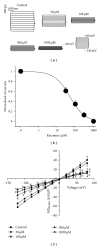Ketamine inhibits lung fluid clearance through reducing alveolar sodium transport
- PMID: 21976965
- PMCID: PMC3185271
- DOI: 10.1155/2011/460596
Ketamine inhibits lung fluid clearance through reducing alveolar sodium transport
Abstract
Ketamine is a broadly used anaesthetic for analgosedation. Accumulating clinical evidence shows that ketamine causes pulmonary edema with unknown mechanisms. We measured the effects of ketamine on alveolar fluid clearance in human lung lobes ex vivo. Our results showed that intratracheal instillation of ketamine markedly decreased the reabsorption of 5% bovine serum albumin instillate. In the presence of amiloride (a specific ENaC blocker), fluid resolution was not further decreased, suggesting that ketamine could decrease amiloride-sensitive fraction of AFC associated with ENaC. Moreover, we measured the regulation of amiloride-sensitive currents by ketamine in A549 cells using whole-cell patch clamp mode. Our results suggested that ketamine decreased amiloride-sensitive Na+ currents (ENaC activity) in a dose-dependent fashion. These data demonstrate that reduction in lung ENaC activity and lung fluid clearance following administration of ketamine may be the crucial step of the pathogenesis of resultant pulmonary edema.
Figures


Similar articles
-
Alveolar but not intravenous S-ketamine inhibits alveolar sodium transport and lung fluid clearance in rats.Anesth Analg. 2010 Jul;111(1):164-70. doi: 10.1213/ANE.0b013e3181e21cc9. Epub 2010 Jun 2. Anesth Analg. 2010. PMID: 20519416
-
Dexmedetomidine enhances human lung fluid clearance through improving alveolar sodium transport.Fundam Clin Pharmacol. 2017 Aug;31(4):429-437. doi: 10.1111/fcp.12278. Epub 2017 Mar 1. Fundam Clin Pharmacol. 2017. PMID: 28186665
-
Phosphatidylinositol 4,5-bisphosphate stimulates alveolar epithelial fluid clearance in male and female adult rats.Am J Physiol Lung Cell Mol Physiol. 2011 Nov;301(5):L804-11. doi: 10.1152/ajplung.00445.2010. Epub 2011 Aug 26. Am J Physiol Lung Cell Mol Physiol. 2011. PMID: 21873448
-
Amiloride-insensitive Na+ and fluid absorption in the mammalian distal lung.Am J Physiol Lung Cell Mol Physiol. 2008 Mar;294(3):L401-8. doi: 10.1152/ajplung.00431.2007. Epub 2007 Dec 27. Am J Physiol Lung Cell Mol Physiol. 2008. PMID: 18162600 Review.
-
Salt and water transport across the alveolar epithelium in the developing lung: correlations between function and recent molecular biology advances (Review).Int J Mol Med. 1998 Nov;2(5):515-31. doi: 10.3892/ijmm.2.5.515. Int J Mol Med. 1998. PMID: 9858647 Review.
Cited by
-
Differential Intraocular Pressure Measurements by Tonometry and Direct Cannulation After Treatment with Soluble Adenylyl Cyclase Inhibitors.J Ocul Pharmacol Ther. 2017 Oct;33(8):574-581. doi: 10.1089/jop.2017.0027. Epub 2017 Jul 7. J Ocul Pharmacol Ther. 2017. PMID: 28686538 Free PMC article.
-
Intravenous S-ketamine does not inhibit alveolar fluid clearance in a septic rat model.PLoS One. 2014 Nov 11;9(11):e112622. doi: 10.1371/journal.pone.0112622. eCollection 2014. PLoS One. 2014. PMID: 25386677 Free PMC article.
References
-
- Pandey CK, Mathur N, Singh N, Chandola HC. Fulminant pulmonary edema after intramuscular ketamine. Canadian Journal of Anesthesia. 2000;47(9):894–896. - PubMed
-
- Murphy JL., Jr. Hypertension and pulmonary oedema associated with ketamine administration in a patient with a history of substance abuse. Canadian Journal of Anaesthesia. 1993;40(2):160–164. - PubMed
-
- Boutureira J, Trim CM, Cornell KK. Acute pulmonary edema after diazepam-ketamine in a dog. Veterinary Anaesthesia and Analgesia. 2007;34(5):371–376. - PubMed
Publication types
MeSH terms
Substances
Grants and funding
LinkOut - more resources
Full Text Sources

